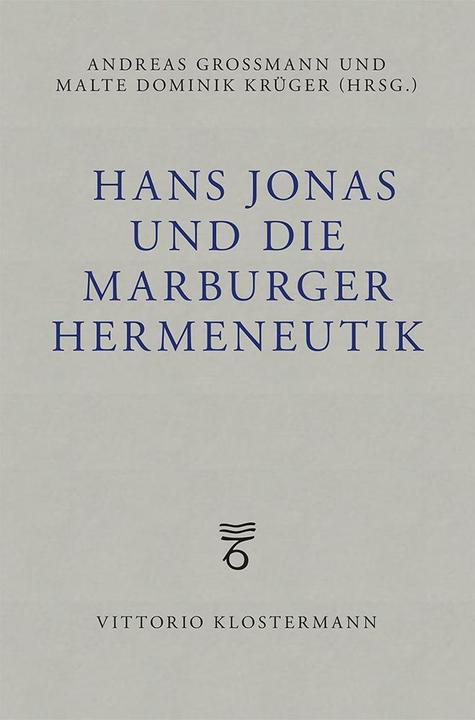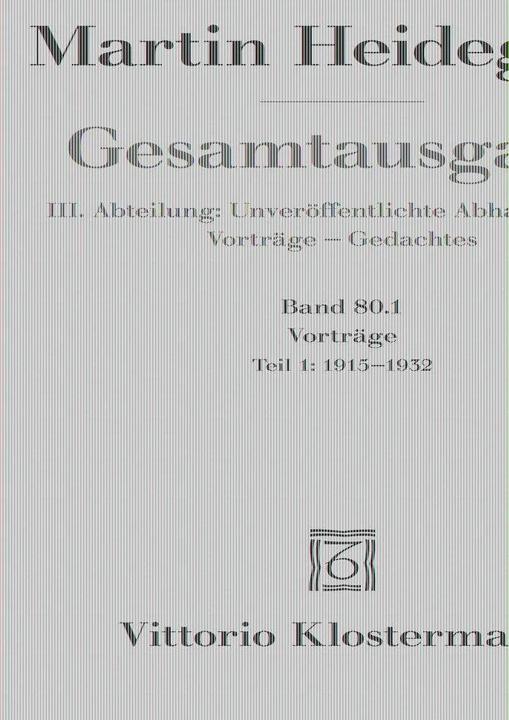
Best selling Reference books from Vittorio Klostermann
On this page you'll find a ranking of the best Vittorio Klostermann products in this category. To give you a quick overview, we've already ranked the most important information about the products for you.
1. Vittorio Klostermann Günther Neumann
The first volume of the complete edition of Martin Heidegger's works (GA 80.1), titled "Lectures," includes 10 previously unpublished texts from his lectures held between 1915 and 1932, as well as 3 texts that have only appeared outside of the complete edition. In accordance with Heidegger's explicit instruction to include all earlier drafts and preparatory works, the volume also contains 4 earlier versions of the crucial lecture "On the Essence of Truth," which he published in its final version in 1943. Additionally, a "preparation" for Plato's "Allegory of the Cave" is included. Eight of the 18 texts featured in this volume address the question of truth, making this theme a focal point of the present volume. The volume includes the following lectures: Question and Judgment (July 10, 1915) - On Psychology (April 1920) - Being and Truth (after Aristotle, 1923/24) - Wilhelm Dilthey's Research Work and the Current Struggle for a Historical Worldview (April 16-21, 1925) - Concept and Development of Phenomenological Research (December 4, 1926) - Phenomenology and Theology (July 8, 1927) - Philosophical Anthropology and Metaphysics of Being (January 24, 1929) - The Current Problematic Situation of Philosophy (December 4, 1929, and March 21, 1930) - Hegel and the Problem of Metaphysics (March 22 and 24, 1930) - On the Essence of Truth (1930/1940) - Augustine: What is Time? Confessions Book XI (October 26, 1930) - Allegory of the Cave (Preparation around 1931) - Άλήθεια and Allegory of the Cave (November 13, 1931) - Τὸ ψεύδος (July 22, 1932) - "The Law of Non-Contradiction" (December 16, 1932).

2. Vittorio Klostermann Bibliographie der deutschen Sprach- und Literaturwissenschaft 64
The Bibliography of German Language and Literary Studies 64 is a comprehensive academic book that addresses the topics of language and literature. Edited by Volker Michel, this work offers a detailed collection of information and references that are significant for professionals and students in the fields of language and literary studies. With a hardcover binding and a total of 874 pages, it is both durable and informative. The publication is written in German and is part of the renowned series of bibliographies focused on German language and literary studies. The first edition of volume 64 will be published in 2025 and serves as a valuable resource for anyone wishing to engage deeply with the German language and literature. The book is produced in Germany and reflects the latest developments and research findings in this field. It is an indispensable reference work for all those involved in the analysis and understanding of German language and literary studies.

Bibliographie der deutschen Sprach- und Literaturwissenschaft 64
German, Volker Michel, 2025
3. Vittorio Klostermann Fink:Hegel
The book is the result of lectures in which Eugen Fink explores the line of thought of the 'Phenomenology of Spirit.' He not only employs the tools developed in phenomenology but also makes it clear that method and subject matter cannot be separated. Through this engagement with Hegelian philosophy, the book is also excellent for those readers seeking access to the 'Phenomenology of Spirit.' 'Fink's Hegel book is one of his most outstanding writings: The book has the ability to shake deeply rooted habits of thought and prejudices.' Hegel Studies.

4. Vittorio Klostermann Romantik
Romantics are people who believe in a highest truth and a life goal, but have not yet found either. Therefore, they remain in motion. As Novalis put it: "We seek the unconditional everywhere, and always find only things." This central idea explains Romanticism: as an era that begins around 1800 and whose impulses continue to resonate to the present day; as a movement that takes place in literature but also encompasses other arts and life practices; with a focus on German culture, but also considering English and American culture. At the beginning of this introduction are communal living arrangements in Berlin, Jena, and Heidelberg. Following the explanation of their inspiring idea, chapters discuss "romanticizing" one’s own life, romantic imagery, and irony. Then it addresses political romanticism, love, and finally the darker sides of Romanticism.
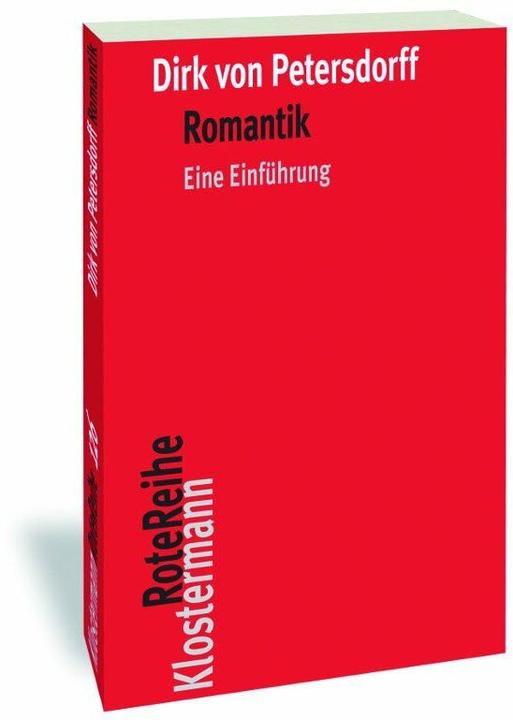
5. Vittorio Klostermann Bernard Bolzano
The book "Bernard Bolzano: His Time and His Life, His Work and His Impact" by Wolfgang Künne offers a comprehensive analysis of the life and philosophy of Bernard Bolzano, a significant thinker of the 19th century. This scholarly work, which deals with the history of philosophy, highlights Bolzano's influence on the philosophical and religious discussions of his time. With a length of 2380 pages and a weight of 3082 grams, it is an extensive volume that is of interest to both students and professionals. The publication is written in German and is set to be released in 2024. With a width of 15.8 cm and a height of 23 cm, the book is handy and well-suited for use in libraries or for personal collections. Künne succeeds in presenting the complexity of Bolzano's thought in an understandable manner and clarifying its relevance to modern philosophy.
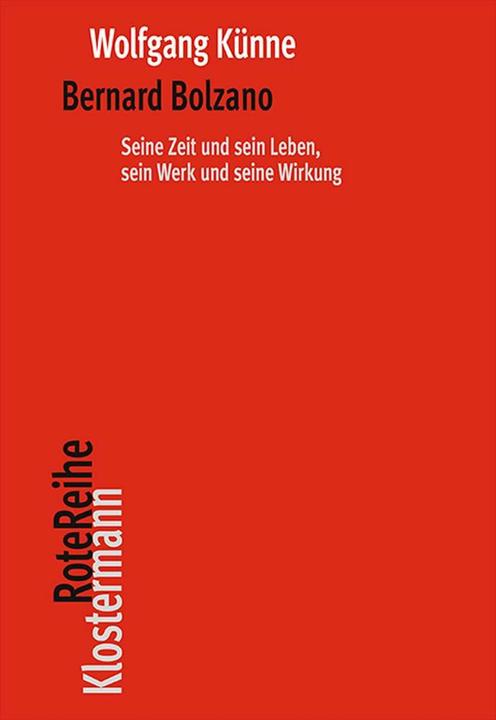
6. Vittorio Klostermann Zollikoner Seminare
Between 1959 and 1969, the psychiatrist Medard Boss invited Martin Heidegger to Zollikon by Lake Zurich a total of eleven times to develop the so-called Daseinsanalysis in private seminars. Heidegger seized the opportunity to examine his thoughts on existence, based on "Being and Time," in direct contact with psychiatrists, psychotherapists, and psychoanalysts. Central themes of Heidegger's thinking are addressed in this context. Since he is not speaking to professional philosophers here, the result is one of the clearest introductions to Heidegger's thought. The volume contains the protocols of the seminars, reviewed and supplemented by Heidegger, conversations between Heidegger and Boss, as well as extensive excerpts from their correspondence. These texts are highly remarkable. At the end of his life, Heidegger refers back to his first major work, "Being and Time," which suddenly becomes unexpectedly fruitful for the science of humanity, psychology, and psychiatry.
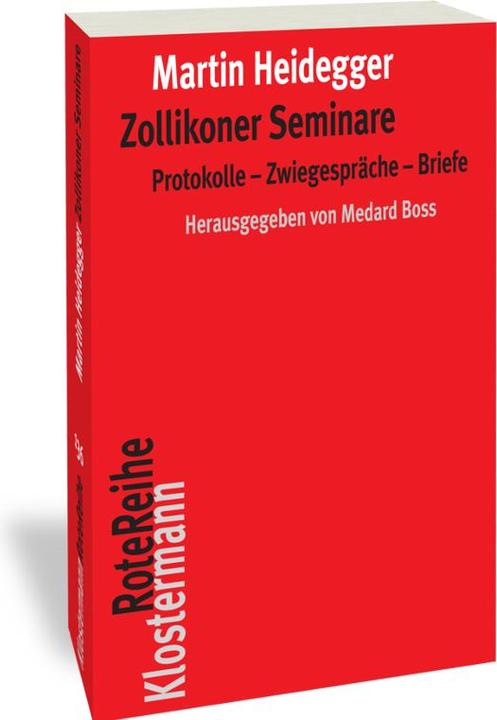
7. Vittorio Klostermann Rechtsgeschichte -Legal History (RG) Band 33, 2025
The research section of the new Rg edition opens with an article on the multilingualism of law in late antiquity: In his investigations of sources primarily in Syriac, Coptic, and Hebrew, Hartmut Leppin demonstrates that the Roman Empire was a world of legal pluralism, whose linguistic openness decentralized the empire and even transcended its borders. Thorsten Keiser illustrates, using sources on labor law history from the late Middle Ages, early modern period, and modern times, how a law of discipline evolved into a law of social security. The potential applications of digital humanities are showcased by Thomas Weitin and Katharina Herget through the example of the New Pitaval criminal case collection. Finally, Daniel Siemens dedicates his work to the journal "Rechtsprechung" on restitution law (1949-1981) and its editor Walter Schwarz. The focus of a series of contributions is on the normative structures of industrial relations in the 19th and 20th centuries. In the review section, as always, new publications from the vibrant field of international legal historical research are discussed. For the first time, selected publications by members of the MPI are also presented: briefly and without critique, as the name of this new section suggests. The edition concludes with two marginal notes: Ralf Seinecke explores the question "What is law?" and Karla Escobar addresses the Indigenous movement in Colombia around 1900 in the form of a graphic history.

Rechtsgeschichte -Legal History (RG) Band 33, 2025
German, Thomas Duve, Marietta Auer, Stefan Vogenauer, 2025
8. Vittorio Klostermann Feldweg-Gespräche (1944/45)
The conversations compiled in this volume took place in the winter of 1944/45, as World War II was coming to an end. With the devastation of Germany and Europe in mind, Heidegger relates the forgetfulness of being inherent in modern thought, shaped by will and manifesting in the dominance of technology, to the "world-encompassing process of destruction." The central themes of his late philosophy are present in these conversations. For his explorations, Heidegger chose a new form: they are imagined dialogues in various situations between a knowing individual and one or two fellow or alternative thinkers. In all three conversations, the focus is on the other or "future" essence of thinking that arises from serenity: what is needed is not a different direction of thought, but a new way of thinking.
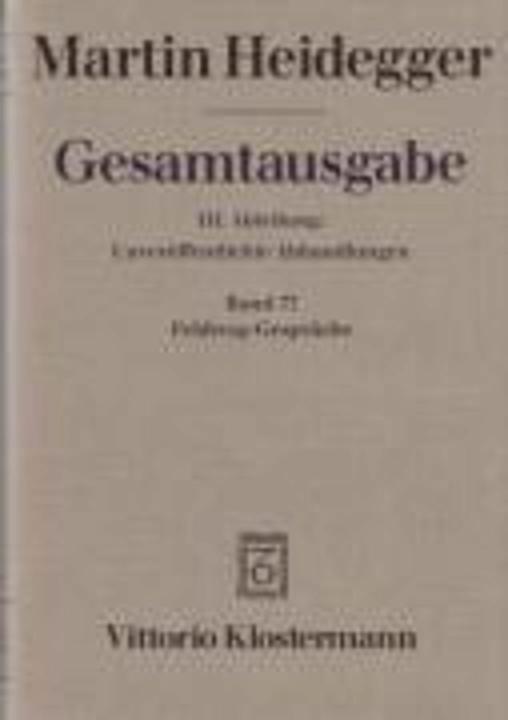
9. Vittorio Klostermann Dionysos versus Mose
Around 1900, there is a growing fascination in European intellectual history with the contrast between myth and monotheism, between many gods and one God. In the reflection of this ancient topos, fundamental questions of modernity are addressed: the relationship between immanence and transcendence, heteronomy and freedom, tolerance and dogma. Matthias Löwe's study reconstructs the modern discourse on myth and monotheism and its aesthetic potential, which is particularly unleashed in the early 20th century, in the works of Hugo von Hofmannsthal, Gerhart Hauptmann, Arnold Schönberg, and Thomas Mann. These intellectuals do not pursue historical interests in religion through the aestheticization of myth and monotheism. Rather, they grapple with the interpretation of modernity in the guise of literarized myths or biblical stories.
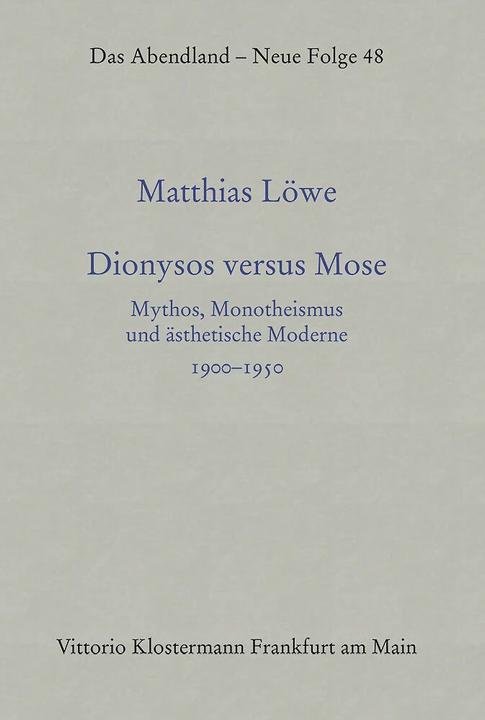
10. Vittorio Klostermann Malte Dominik Krüger
During his studies in Marburg, Hans Jonas (1903-1993) received significant impulses from his philosophical teacher Martin Heidegger, but equally from the Protestant theologian Rudolf Bultmann. With the latter, he would share a lifelong scholarly friendship. The proposed interpretative approach suggests that Hans Jonas is part of the Marburg hermeneutics shaped by Heidegger, Bultmann, and their respective students. Following Dieter Henrich, it is understood as a constellation characterized by both belonging and distance. Emerging from an international and interdisciplinary Marburg conference, the contributions in this volume explore various traces of the Marburg constellations in Jonas's thinking. They thus uncover an important chapter of intellectual history at the intersection of philosophy and theology.
